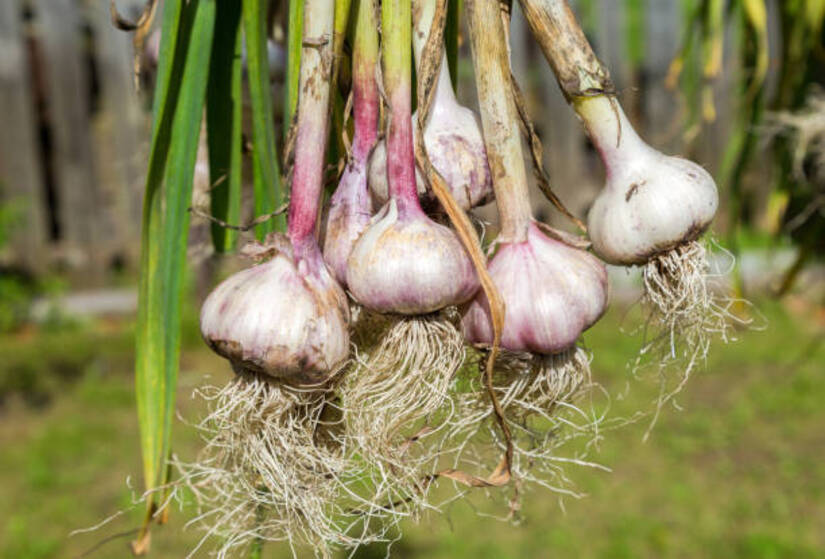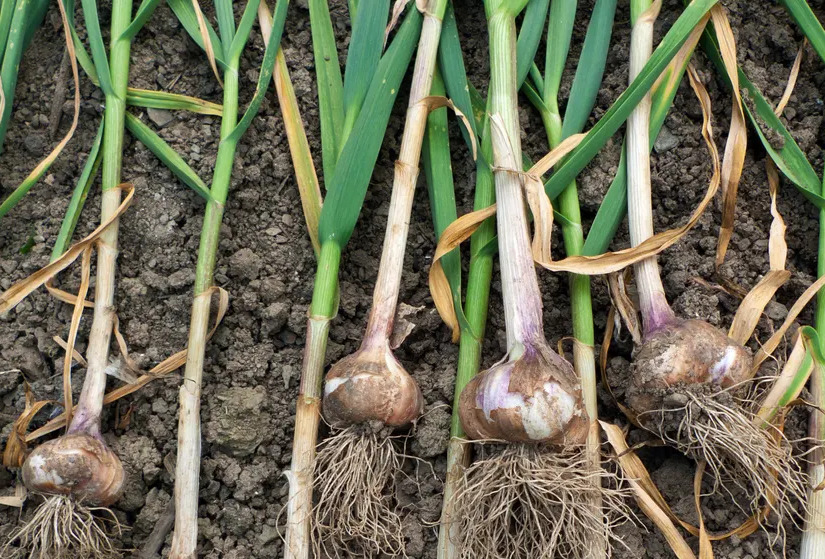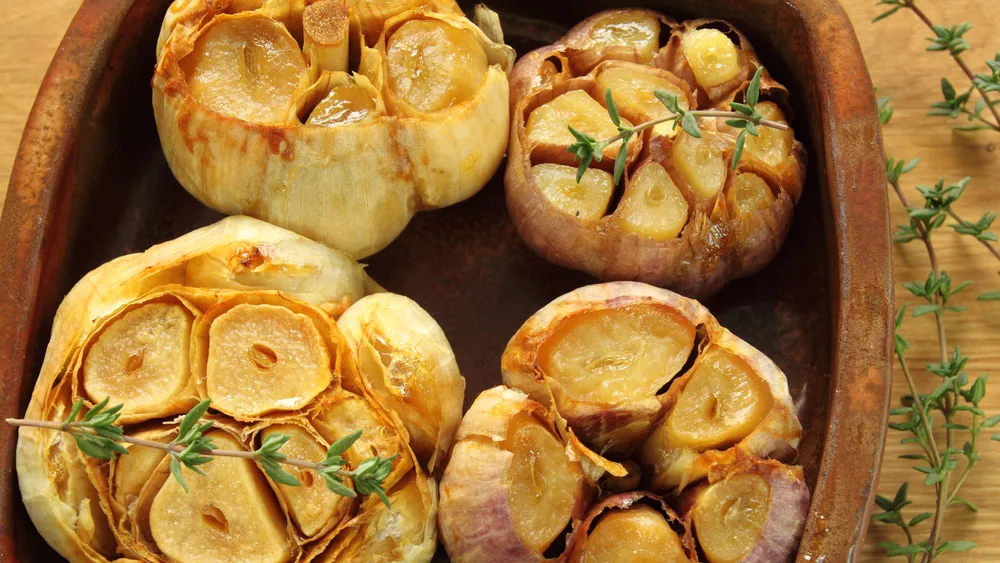
Garlic Growing Guidelines
Garlic, a close cousin of the onion, is an aromatic, bulbous vegetable native to Asia which has been grown for thousands of years. Garlic emerges above ground as flat, grass-like leaves (also identified as scapes). Below ground, on the other hand, it produces a strong bulb with four to twenty cloves wrapped in a papery covering. Garlic should be sown in the fall, approximately one month before the first cold. Garlic harvesting is not a precise science. It will develop slowly over the following nine months or more, producing a large yield by semi or summer. Animals are known to be poisoned by garlic.
Characteristics

Mature Size
30 to 45 cm tall, 15 to 30 cm wide

Sun Exposure
Full sun

Soil Type
Moist, well-drained

Soil pH
Slightly acidic to neutral (6.0 to 7.0)

Bloom Time
Spring

veg. color
white
Environmental Footprint
Varieties and differences
Garlic sub-varieties are classified into two types: hardneck and softneck. Softneck garlic grows better in warm regions, but hardneck garlic is preferred by northern producers. Softneck garlic keeps and carries easier than hardneck garlic, has a richer taste, and yields bigger cloves in general. Try elephant garlic for a softer garlic flavor—really it’s more strongly related to leeks rather than pure garlic.
Fertilizer
When producing garlic, the usage of fertilizer might be useful. As you transplant your garlic in the autumn, incorporate a slow-release biofertilizer combination into the soil. When the foliage begins to sprout in the springtime, feed the soil around your crops with a nitrogen-rich fertilizer combination.
Soil
One of the most crucial aspects of producing garlic successfully is starting with nutrient-rich soil. It should also be wet yet well-draining, with a pH between 6.0 and 7.0. After planting, spread a covering of mulch on top of the soil to protect the bulbs, retain moisture, and discourage weed development.
Water
True to its easy-going nature, garlic doesn’t have a ton of water requirements. It generally likes its soil moist and should receive around an inch of water per week, with a slight increase if the weather is especially warm. Keep the soil evenly moist throughout the first part of the growing season, but allow the soil to go dry for two or three weeks before harvesting if conditions are too wet near harvest time, mold can grow.
Light
While it may seem strange for a plant that grows mainly underground, garlic adores sunshine. Plant your garlic in a location that receives full sunshine for at least 6 – 8 hours every day to give it the best chance of success.

Humidity and temperature
Garlic is an extremely resilient plant that thrives throughout the cooler winter months. That stated, seed your garlic around a month before the first hard cold in the fall. Furthermore, garlic has no specific humidity needs.
Harvesting
When the bulk of the bottom leaves has turned brown, it’s harvest time for your garlic. This normally happens around mid to late summer, although you may be able to do it in the spring as well. To check ripeness, dig out a test bulb or two the garlic has to be well-wrapped but again not split.
Stick a garden fork directly down into the dirt approximately 15 to 20 cm away from the plant to collect. The fork should be angled such that it goes beneath the bulb and raises out of the soil. Pulling the bulb out by its foliage risks tearing the bulb off. Garlic bruises readily, so exercise caution.
Garlic that has been harvested prefers to be kept at cool temperatures, as low as 0 degrees celsius. Softneck varieties can live for up to 8 months. Within two or four months, hardneck cultivars may dry out, sprout, or become mushy. Hardnecks can occasionally live for seven or eight months without deterioration if kept at 0 degrees celsius.
Recipe Description

Roasted Garlic
Ingredients
- 1 cup garlic cloves, peeled
- 1-quart olive oil

Servings
1 person

Prepping time
5 min

Cooking time
15 min
- In a small pan, saute the garlic and olive oil over moderate flame until the oil begins to boil.
- Lower heat to low and simmer for 10 minutes, or till garlic cloves are tender and golden with brown spots.
- Allow cooling before pouring into a jar. (Could be sealed and refrigerated for up to a month.)
Order Plant Food in our Shop!
Shop NowFAQ
Can garlic be grown indoors?
Is garlic simple to grow?
Garlic is much more common than ever, and for good reason: it is full of taste and easy to cultivate for the novice cultivation of vegetables, giving it the perfect introduction to food crops. It’s quite hard not to have a rich harvest on your very first try, as long as you keep the necessary (minimum) circumstances.






